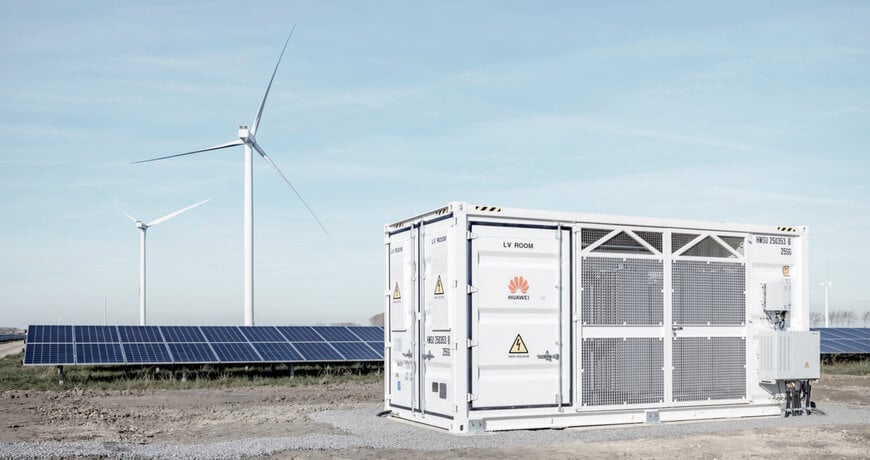www.industryemea.com
02
'25
Written on Modified on
IDNOs and the Great British Energy Act 2025: The Missing Link in Delivery
Vattenfall IDNO’s Suzanna Lashford urges tapping IDNOs to help deliver the UK’s clean energy goals under the 2025 Act.
group.vattenfall.com

The Great British Energy Act 2025 marks a significant policy moment for the UK energy system. It establishes Great British Energy (GBE) as a publicly owned company to accelerate the development and distribution of clean energy. At a time when the government is under pressure to deliver on its 2035 clean power commitment, the Act sets out a strong strategic direction.
However, the question now turns to delivery—and it’s here that Independent Distribution Network Operators (IDNOs) could play a more vital role. While the Act does not reference IDNOs directly, several provisions within it, along with related policies, point to a clear opportunity: to better utilise the expertise and capacity of regulated IDNOs to support the country’s energy transition.
Clean energy distribution at pace
One of GBE’s primary functions is to facilitate the distribution of clean energy—an ambitious goal that requires timely and localised infrastructure development. In practice, this means connecting new sources of renewable generation, energy storage, electrified heat, and transport infrastructure into the grid, often at the distribution level.
“IDNOs have a unique ability to deliver connection infrastructure quickly, efficiently, and without drawing on public funds,” explains Suzanna Lashford, Head of Business Development at Vattenfall IDNO. “We’re already working with developers across the UK to connect renewables and low-carbon technologies. By engaging IDNOs more systematically, GBE could scale its impact without duplicating capabilities already available in the market.”
Partnering for progress
The Act gives GBE the mandate to enter into partnerships with private firms, local authorities and international investors, subject to government approval. This provision creates scope for new models of collaboration, where different parties contribute capital, expertise, and delivery capacity to shared energy goals.
“GBE doesn’t need to build everything itself,” says Lashford. “There is more value in developing collaborative frameworks where publicly owned strategy aligns with private sector delivery. IDNOs are already investing at scale in regulated network assets—and our long-term ownership model aligns well with national objectives.”
Although not mentioned in the Act, the broader energy policy framework strengthens the case for IDNO involvement. The Energy Act 2023 introduced a formal net-zero duty for Ofgem, requiring the regulator to consider how its actions support climate targets. This reframing reflects the systemic nature of the transition and the need for a wider set of contributors.
“Net zero is fundamentally an infrastructure challenge, and it requires diverse actors who can deliver at scale,” Lashford observes. “IDNOs bring competition, innovation, and financial efficiency to network deployment. Our regulatory oversight is robust, and our delivery models are proven—making us natural partners for a system under pressure to decarbonise at pace.”
A new era for onshore infrastructure
Energy Act 2023 also introduced competitive tendering for the development of onshore electricity transmission networks—a significant shift in a space historically dominated by incumbents. While this new process applies to transmission, it reflects a broader direction in policy: opening the energy infrastructure sector to a wider range of qualified participants. For IDNOs, this change shows there’s growing scope to contribute more actively to regulated network delivery, particularly at the distribution level.
“This is a pragmatic evolution of the sector,” says Lashford. “The transition to a low-carbon energy system cannot be achieved through the traditional monopoly model alone. Competitive tenders will enable greater innovation and efficiency—and GBE can help facilitate that by encouraging a broader base of delivery partners.”
Earlier this month, the Environmental Audit Committee warned that the government risks missing its clean power targets without urgent action to resolve grid connection delays and network constraints. Among their recommendations were calls for greater transparency on delivery and faster progress on infrastructure investment.
“These challenges are not hypothetical—they are already delaying projects,” Lashford notes. “We need to expand the pool of organisations that can deliver regulated infrastructure, particularly at the distribution level. GBE can help lead that conversation by bringing IDNOs into the fold and enabling more joined-up delivery.”
The Great British Energy Act sets out the vision. The next phase is execution—and that will require contributions from across the energy sector. While IDNOs are not explicitly referenced in the legislation, the opportunities for alignment are clear.
“The UK has the ambition and the policy framework,” concludes Lashford. “Now we need to focus on delivery. IDNOs have the regulatory status, the investment capability, and the track record to contribute meaningfully—and we stand ready to support GBE and the wider energy system in meeting the challenges ahead.”
www.vattenfall.com

